Massimo Brescia
AMBER -- Advanced SegFormer for Multi-Band Image Segmentation: an application to Hyperspectral Imaging
Sep 14, 2024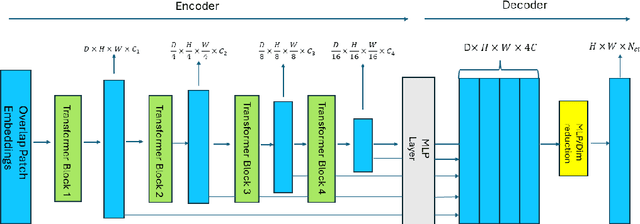

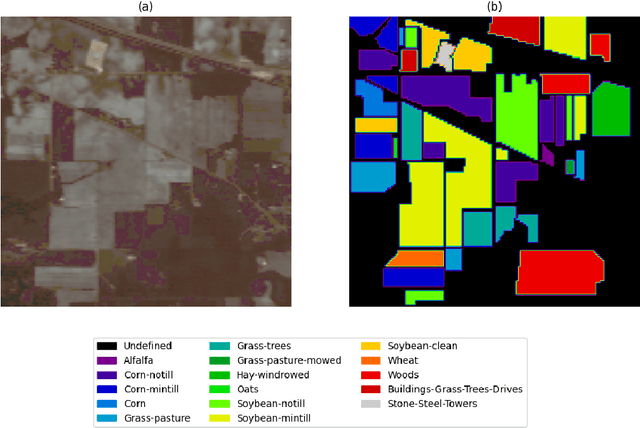

Abstract:Deep learning has revolutionized the field of hyperspectral image (HSI) analysis, enabling the extraction of complex and hierarchical features. While convolutional neural networks (CNNs) have been the backbone of HSI classification, their limitations in capturing global contextual features have led to the exploration of Vision Transformers (ViTs). This paper introduces AMBER, an advanced SegFormer specifically designed for multi-band image segmentation. AMBER enhances the original SegFormer by incorporating three-dimensional convolutions to handle hyperspectral data. Our experiments, conducted on the Indian Pines, Pavia University, and PRISMA datasets, show that AMBER outperforms traditional CNN-based methods in terms of Overall Accuracy, Kappa coefficient, and Average Accuracy on the first two datasets, and achieves state-of-the-art performance on the PRISMA dataset.
Galaxy spectroscopy without spectra: Galaxy properties from photometric images with conditional diffusion models
Jun 26, 2024



Abstract:Modern spectroscopic surveys can only target a small fraction of the vast amount of photometrically cataloged sources in wide-field surveys. Here, we report the development of a generative AI method capable of predicting optical galaxy spectra from photometric broad-band images alone. This method draws from the latest advances in diffusion models in combination with contrastive networks. We pass multi-band galaxy images into the architecture to obtain optical spectra. From these, robust values for galaxy properties can be derived with any methods in the spectroscopic toolbox, such as standard population synthesis techniques and Lick indices. When trained and tested on 64x64-pixel images from the Sloan Digital Sky Survey, the global bimodality of star-forming and quiescent galaxies in photometric space is recovered, as well as a mass-metallicity relation of star-forming galaxies. The comparison between the observed and the artificially created spectra shows good agreement in overall metallicity, age, Dn4000, stellar velocity dispersion, and E(B-V) values. Photometric redshift estimates of our generative algorithm can compete with other current, specialized deep-learning techniques. Moreover, this work is the first attempt in the literature to infer velocity dispersion from photometric images. Additionally, we can predict the presence of an active galactic nucleus up to an accuracy of 82%. With our method, scientifically interesting galaxy properties, normally requiring spectroscopic inputs, can be obtained in future data sets from large-scale photometric surveys alone. The spectra prediction via AI can further assist in creating realistic mock catalogs.
ULISSE: A Tool for One-shot Sky Exploration and its Application to Active Galactic Nuclei Detection
Aug 23, 2022
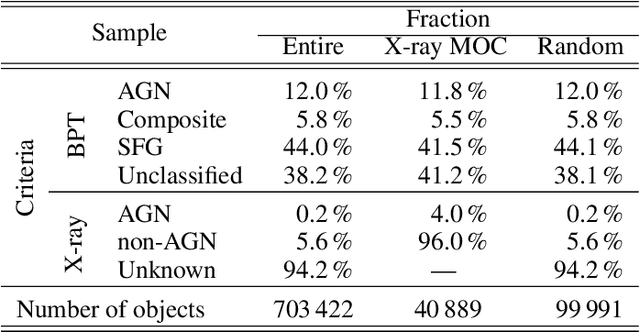
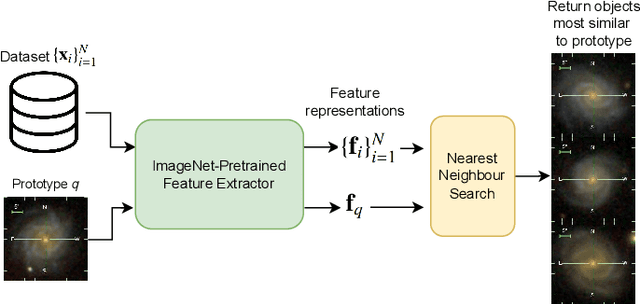
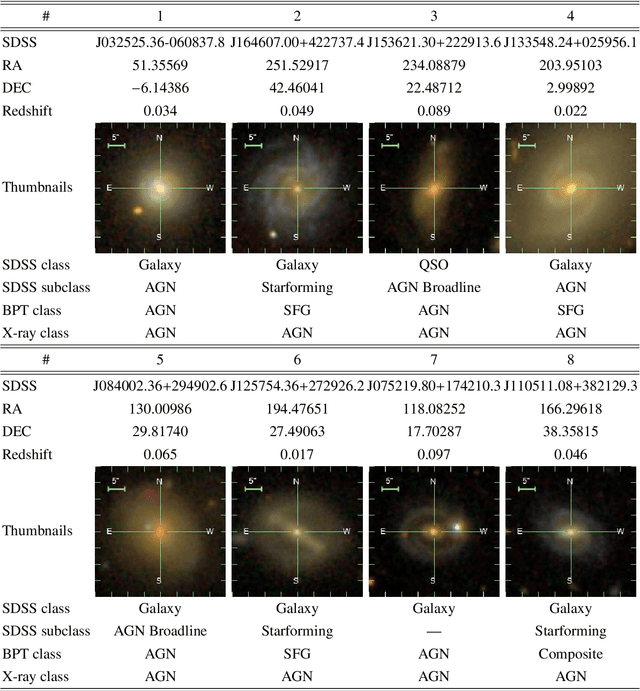
Abstract:Modern sky surveys are producing ever larger amounts of observational data, which makes the application of classical approaches for the classification and analysis of objects challenging and time-consuming. However, this issue may be significantly mitigated by the application of automatic machine and deep learning methods. We propose ULISSE, a new deep learning tool that, starting from a single prototype object, is capable of identifying objects sharing the same morphological and photometric properties, and hence of creating a list of candidate sosia. In this work, we focus on applying our method to the detection of AGN candidates in a Sloan Digital Sky Survey galaxy sample, since the identification and classification of Active Galactic Nuclei (AGN) in the optical band still remains a challenging task in extragalactic astronomy. Intended for the initial exploration of large sky surveys, ULISSE directly uses features extracted from the ImageNet dataset to perform a similarity search. The method is capable of rapidly identifying a list of candidates, starting from only a single image of a given prototype, without the need for any time-consuming neural network training. Our experiments show ULISSE is able to identify AGN candidates based on a combination of host galaxy morphology, color and the presence of a central nuclear source, with a retrieval efficiency ranging from 21% to 65% (including composite sources) depending on the prototype, where the random guess baseline is 12%. We find ULISSE to be most effective in retrieving AGN in early-type host galaxies, as opposed to prototypes with spiral- or late-type properties. Based on the results described in this work, ULISSE can be a promising tool for selecting different types of astrophysical objects in current and future wide-field surveys (e.g. Euclid, LSST etc.) that target millions of sources every single night.
A novel approach to the classification of terrestrial drainage networks based on deep learning and preliminary results on Solar System bodies
Mar 06, 2021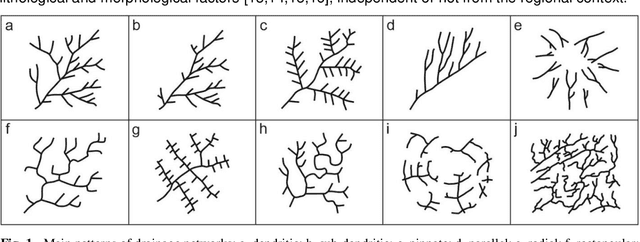
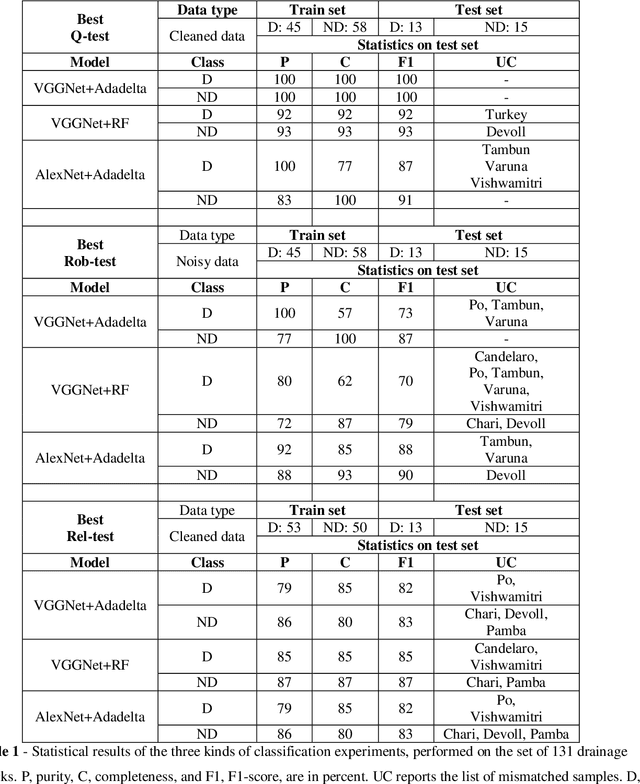
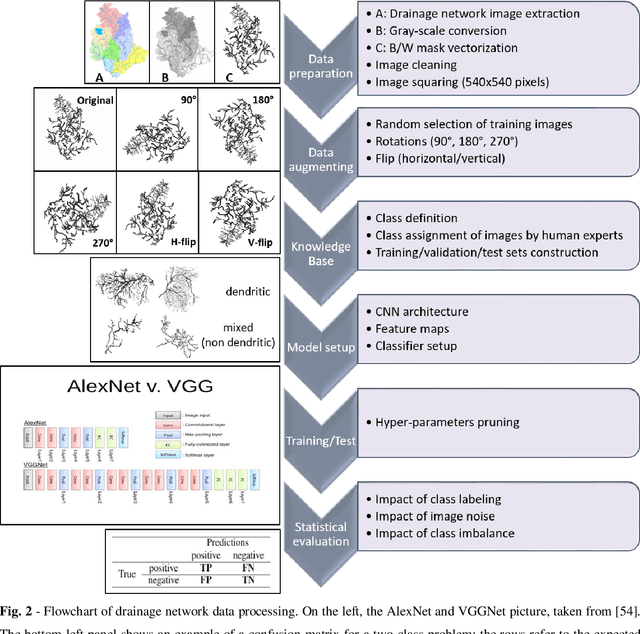
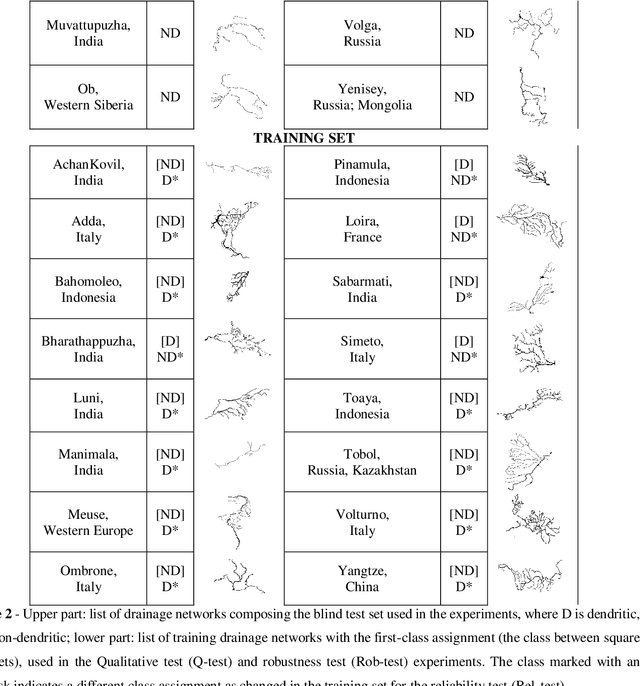
Abstract:Several approaches were proposed to describe the geomorphology of drainage networks and the abiotic/biotic factors determining their morphology. There is an intrinsic complexity of the explicit qualification of the morphological variations in response to various types of control factors and the difficulty of expressing the cause-effect links. Traditional methods of drainage network classification are based on the manual extraction of key characteristics, then applied as pattern recognition schemes. These approaches, however, have low predictive and uniform ability. We present a different approach, based on the data-driven supervised learning by images, extended also to extraterrestrial cases. With deep learning models, the extraction and classification phase is integrated within a more objective, analytical, and automatic framework. Despite the initial difficulties, due to the small number of training images available, and the similarity between the different shapes of the drainage samples, we obtained successful results, concluding that deep learning is a valid way for data exploration in geomorphology and related fields.
Machine learning based data mining for Milky Way filamentary structures reconstruction
Oct 11, 2016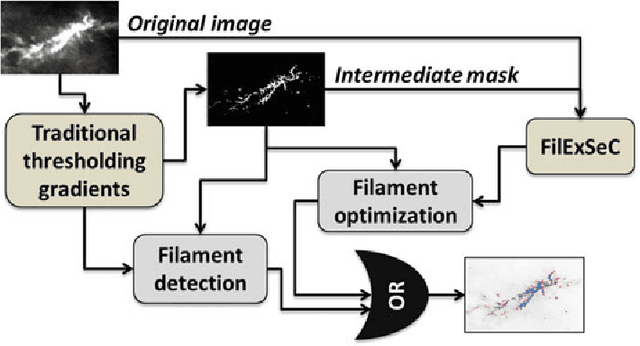
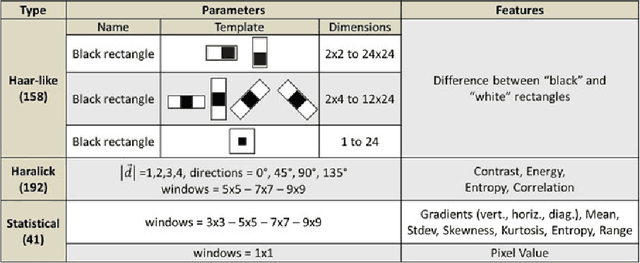
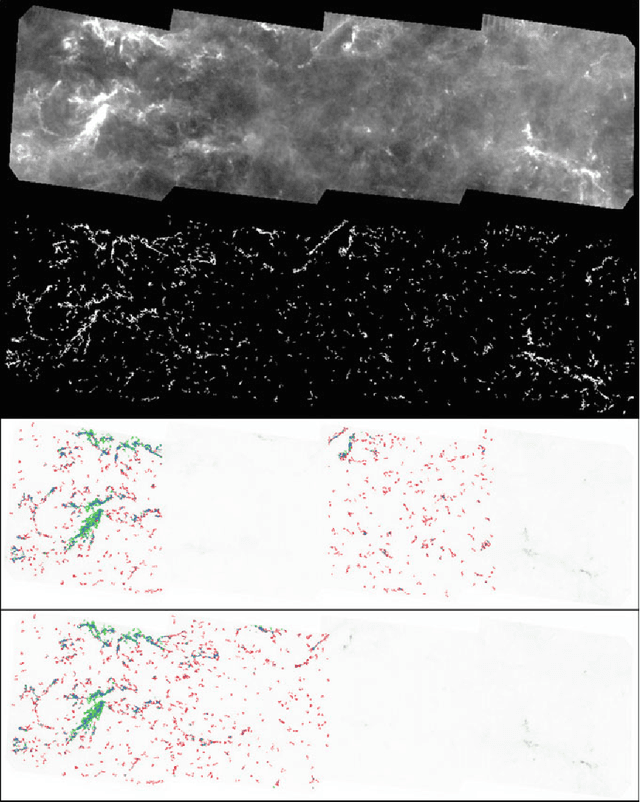
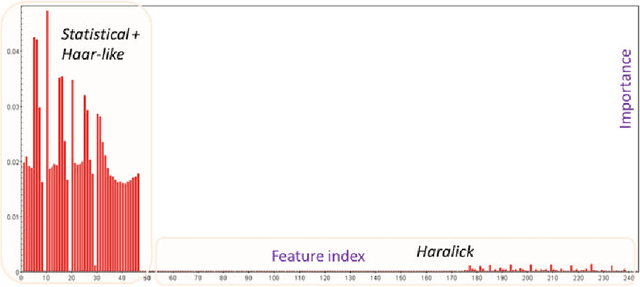
Abstract:We present an innovative method called FilExSeC (Filaments Extraction, Selection and Classification), a data mining tool developed to investigate the possibility to refine and optimize the shape reconstruction of filamentary structures detected with a consolidated method based on the flux derivative analysis, through the column-density maps computed from Herschel infrared Galactic Plane Survey (Hi-GAL) observations of the Galactic plane. The present methodology is based on a feature extraction module followed by a machine learning model (Random Forest) dedicated to select features and to classify the pixels of the input images. From tests on both simulations and real observations the method appears reliable and robust with respect to the variability of shape and distribution of filaments. In the cases of highly defined filament structures, the presented method is able to bridge the gaps among the detected fragments, thus improving their shape reconstruction. From a preliminary "a posteriori" analysis of derived filament physical parameters, the method appears potentially able to add a sufficient contribution to complete and refine the filament reconstruction.
Feature Selection based on Machine Learning in MRIs for Hippocampal Segmentation
Jan 16, 2015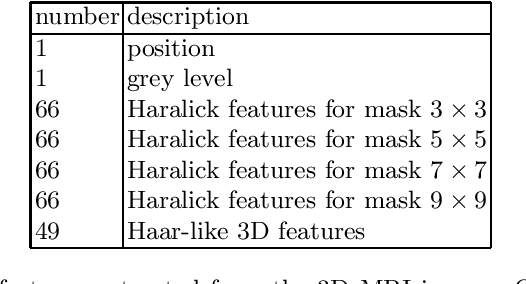
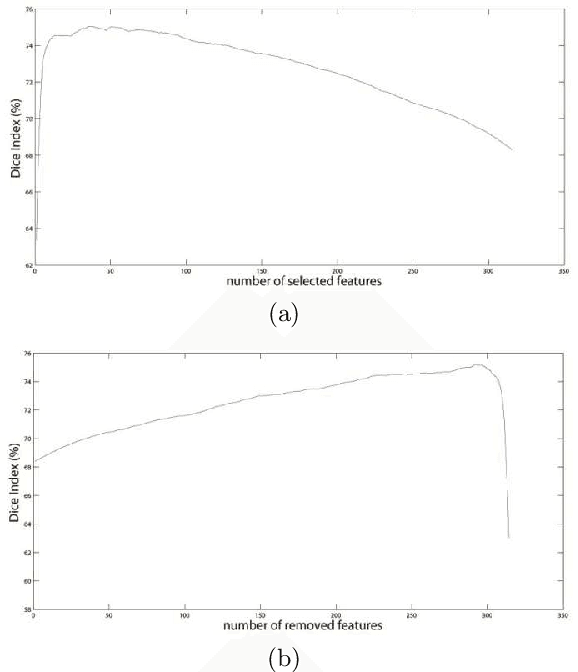


Abstract:Neurodegenerative diseases are frequently associated with structural changes in the brain. Magnetic Resonance Imaging (MRI) scans can show these variations and therefore be used as a supportive feature for a number of neurodegenerative diseases. The hippocampus has been known to be a biomarker for Alzheimer disease and other neurological and psychiatric diseases. However, it requires accurate, robust and reproducible delineation of hippocampal structures. Fully automatic methods are usually the voxel based approach, for each voxel a number of local features were calculated. In this paper we compared four different techniques for feature selection from a set of 315 features extracted for each voxel: (i) filter method based on the Kolmogorov-Smirnov test; two wrapper methods, respectively, (ii) Sequential Forward Selection and (iii) Sequential Backward Elimination; and (iv) embedded method based on the Random Forest Classifier on a set of 10 T1-weighted brain MRIs and tested on an independent set of 25 subjects. The resulting segmentations were compared with manual reference labelling. By using only 23 features for each voxel (sequential backward elimination) we obtained comparable state of-the-art performances with respect to the standard tool FreeSurfer.
* To appear on "Computational and Mathematical Methods in Medicine", Hindawi Publishing Corporation. 19 pages, 7 figures
Genetic Algorithm Modeling with GPU Parallel Computing Technology
Nov 23, 2012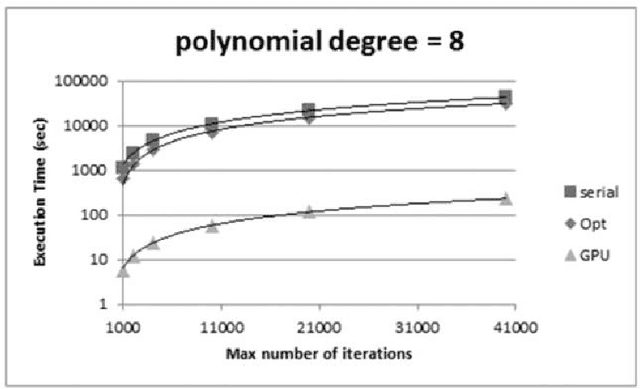
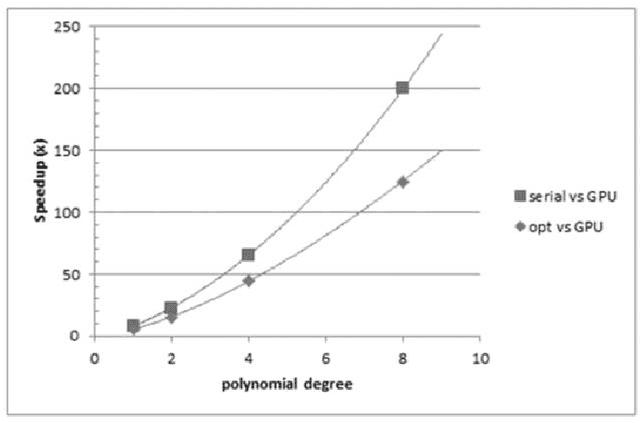
Abstract:We present a multi-purpose genetic algorithm, designed and implemented with GPGPU / CUDA parallel computing technology. The model was derived from a multi-core CPU serial implementation, named GAME, already scientifically successfully tested and validated on astrophysical massive data classification problems, through a web application resource (DAMEWARE), specialized in data mining based on Machine Learning paradigms. Since genetic algorithms are inherently parallel, the GPGPU computing paradigm has provided an exploit of the internal training features of the model, permitting a strong optimization in terms of processing performances and scalability.
 Add to Chrome
Add to Chrome Add to Firefox
Add to Firefox Add to Edge
Add to Edge